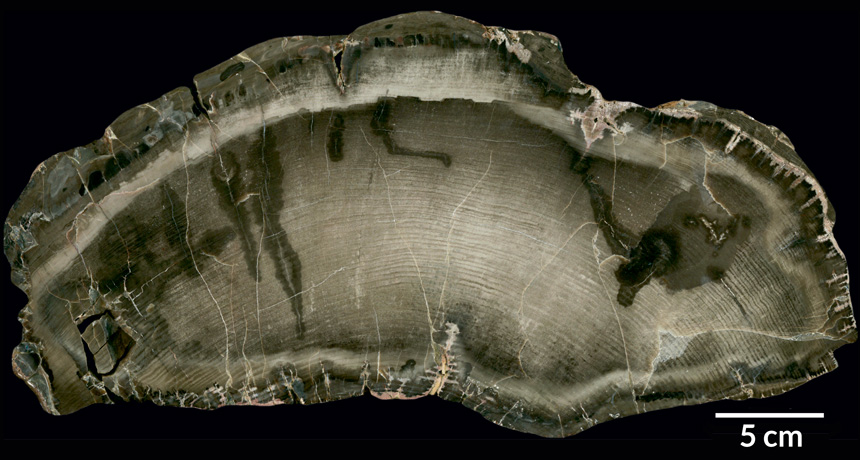Petrified tree rings tell ancient tale of sun’s behavior

The sun has been in the same routine for at least 290 million years, new research suggests.
Ancient tree rings from the Permian period record a roughly 11-year cycle of wet and dry periods, climate fluctuations caused by the ebbing and flowing of solar activity, researchers propose January 9 in Geology. The discovery would push back the earliest evidence of today’s 11-year solar cycle by tens of millions of years.
“The sun has apparently been doing what it’s been doing today for a long time,” says Nat Gopalswamy, a solar scientist at NASA’s Goddard Space Flight Center in Greenbelt, Md., who was not involved in the study.
Around every 11 years, the sun’s brightness and the frequency of sunspots and solar flares completes one round of waxing and waning. These solar changes alter the intensity of sunlight reaching Earth and, some scientists hypothesize, may affect the composition of the stratosphere and rates of cloud formation. Those effects could alter rainfall rates, which in turn influence tree growth.
Ancient trees may hold clues to similar cycles from long ago. In what is now southeast Germany, volcanic eruptions buried an ancient forest under debris roughly 290 million years ago. Paleontologists Ludwig Luthardt and Ronny Rößler of the Natural History Museum in Chemnitz, Germany, identified tree rings in the fossilized remains of the trees.
Measuring the widths of the rings, which show how much the plants grew each year, the researchers discovered a cycle in growth rates. The cycle lasted on average 10.62 years. This cycle reflects years-long rises and falls in annual rainfall rates caused by the solar cycle, the researchers propose. The cycle’s average length falls within the 10.44-year to 11.16-year length of the sunspot cycle seen over the last few hundred years.
Whether the solar and tree ring cycles are connected isn’t certain, says paleoclimatologist Adam Csank of the University of Nevada, Reno. Many studies suggest that it is not possible to clearly identify sunspot cycles in modern tree ring records, he notes. Other changes in Earth’s climate system or periodic insect outbreaks might contribute to tree ring widths, he says.